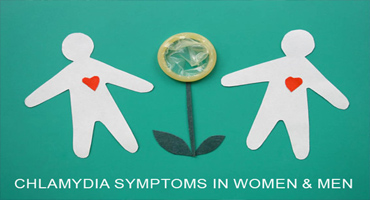Chlamydia
Chlamydia is a sexually transmitted disease caused by the bacteria Chlamydia trachomatis (PubMed Health, 2010). It can be transmitted by unprotected oral, anal, or vaginal sex with a person carrying the infection. An infected woman can also pass it to her baby during vaginal childbirth (Public Health Agency of Canada, 2011). Chlamydia can also be passed on any toy that touches an infected area (Island Sexual Health Society, 2011).
In some rarer cases, Chlamydia has been passed by transmission from fingers touching the genitals to a person's eyes (Avert, 2012). Once you have started treatment for Chlamydia, you can be re-infected before the end of your treatment by having contact with an untreated partner. You are NOT immune and can be contract the infection again (Island Sexual Health Society, 2011).
How common is it?
Chlamydia is the most frequent sexually transmitted infection reported in North America (MedBroadcast, 2012). In 2004, nearly 63,000 cases of it were reported which is a 70% rise from 1997 (Canadian Foundation for Sexual Health, 2010) and in 2013 it has risen to as many as 1,401,906 reported in the United States (CDC, 2015). Today is estimated at 92 million occurrences of infection globally every year (Avert, 2012). The problem is that we don't actually know how many people have Chlamydia because many people who carry the infection do not have symptoms and may not even know that they have it. This means that a percentage of our population may be passing on this sexually transmitted infection unknowningly.
This STI is also extremely common among young people. It is estimated that 1 out of 20 sexually active women between 14 to 24 have Chlamydia. This estimate is taken from the statistics that around two thirds of the new infections of chlamydia happen among youth in the age range of 15 to 24 (CDC, 2015). Many younger people are also less informed about safe sex practices and therefore more likely to engage in unprotected sex.
How is Chlamydia Diagnosed?
Chlamydia is diagnosed by seeing your general physician and may be determined by a number of different tests such as cell culture or the nucleic acid amplification test (NAATs). The NAATs is the most sensitive test and is performed easily through the use of vaginal swabs or through testing urine. These tests do not need to be invasive and can easily detect the prescence of chlamydia (CDC, 2015)
More Chlamydia Facts
Prevention
As with all sexually transmitted disease, the first precaution is abstinence. If engaging in sexual activity, the following methods can reduce the likelihood of contracting Chlamydia:
- Restricting your number of partners
- Ensuring all partners are undergoing regular screenings
- Practicing safe sex through use of condoms during all sexual contact
- Ensuring all toys are appropriately cleaned (PubMed Health, 2010).
Healthy Body, Healthy Play
It is an important part of our health to get regular screenings for STIs and other health problems. The more we take charge of our adult health, the more we can avoid long term affects of such infections, protect the safety of ourselves and our partners, and enjoy a longer and happier sex life. What is your health screening schedule? Even if you're in a committed and closed relationship, it can be good to have these open discussions with your partner about sexual health and happiness. Take charge of your life and ensure you are doing what is best for your health!
Article References
Avert. (2012). Chlamydia: Symptoms, Signs, Treatment & Testing. Retrieved 02 15, 2012, from Avert: HIV & Aids Charity: http://www.avert.org/chlamydia.htm
Canadian Foundation for Sexual Health. (2010, 02 12). Chlamydia in Canada. Retrieved 02 14, 2012, from Canadian Foundation for Sexual Health: http://www.cfsh.ca/files/PDF/chlamydia_in_canada.pdf
CDC. (2015). Chlamydia - CDC Fact Sheet. Retrieved 02 15, 2012, from Center for Disease Control and Prevention: http://www.cdc.gov/std/chlamydia/stdfact-chlamydia.htm
eMedicineHealth. (2012). Chlamydia. Retrieved 02 15, 2012, from eMedicineHealth: http://www.emedicinehealth.com/chlamydia/page2_em.htm
Island Sexual Health Society. (2011). Chlamydia symptoms, testing and treatment. Retrieved 02 15, 2012, from Island Sexual Health Society: http://www.islandsexualhealth.org/infections/chlamydia/
MedBroadcast. (2012). Chlamydia Condition Info. Retrieved 02 14, 2012, from MedBroadcast: 2012
Public Health Agency of Canada. (2011, 10 11). Chlamydia. Retrieved 02 15, 2012, from Public Health Canada: http://www.phac-aspc.gc.ca/publicat/std-mts/chlam-eng.php
PubMed Health. (2010). Chlamydia. Retrieved 02 15, 2012, from PubMed Health: http://www.ncbi.nlm.nih.gov/pubmedhealth/PMH0002321/
WomansHealth. (2011, 07 08). Chlamydia fact sheet. Retrieved 02 15, 2012, from WomansHealth: http://www.womenshealth.gov/publications/our-publications/fact-sheet/chlamydia.cfm
Image References
Someone else's art deserves recognition! The images presented in this article were borrowed from the following places:
Header Image: https://ppadvocatesaz.files.wordpress.com/2011/05/chlamydia.jpg | Retrieved April 28, 2015


